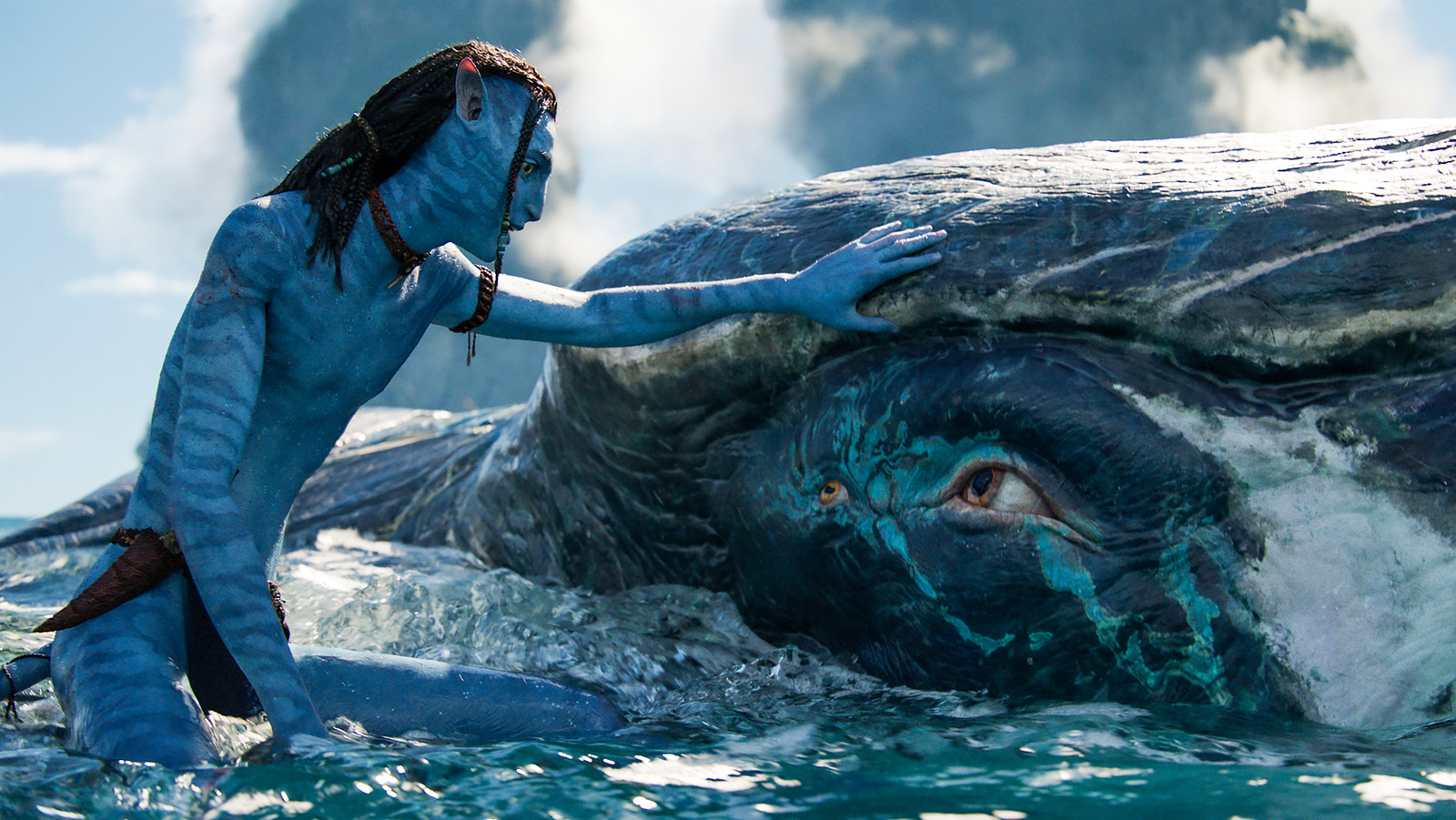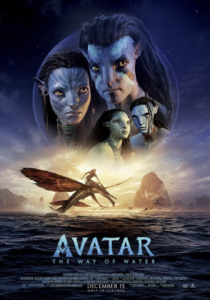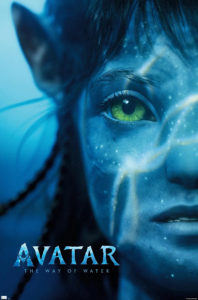By Staff Writer Sahas Goli
Coming in with a splash, Avatar: The Way of Water was released on Dec. 16, 2022. Following its predecessor, Avatar, which is currently the highest-grossing movie of all time, Director James Cameron brings back the stunning visuals of the first movie to create a new world that captivates viewers with its beautiful cinematography and enchanting design. However, The Way of Water falls short in its plot, relying on stellar cinematography to keep viewers engaged.
The Way of Water is a direct sequel to the original Avatar and continues with Jake Sully (Sam Worthington), a human-turned-alien, living as a Na’vi on the alien planet Pandora. Having betrayed the human military, he created a home and a family on the new planet with the Na’vi Neytiri (Zoe Saldana). However, human aggression forces him to move with his family from their forest home to a new home on the Pandoran reefs to escape. When his old commander Quaritch (Stephen Lang), leads an invasion of the reef in pursuit, Jake must work with the reef Na’vi to repel the militaristic invasion of the humans and protect his family.
In order to bring his vision to life, Cameron uses the latest movie technology, mainly modernized CGI, to overlay the actor’s expressions onto animated Na’vi bodies. While CGI has been a staple of Cameron’s previous movies, like the well-known liquid metal robot in Terminator, The Way of Water marked a new milestone in the technology. Actors performed while holding their breath in a specially designed wave pool, and their movements were recorded using performance-capture technology. The data was then sent to Weta FX, where artists created the beautiful scenery seen in the movies. Weta then spent inordinate amounts of time working on the physics of the water in the movie. In fact, most of the water in the movie is CGI, and only two shots in total have no visual effects.
All of these milestones in animation are put to good use with Cameron’s experience in directing. The mayhem of guns, spears, bows and arrows, bare hands, and animals in the climactic fight scenes lends itself to a degree of unpredictability and excitement that makes any viewer sit on the edges of their seats. Yet this pales in comparison to the exquisitely crafted setting of the movie. From the scenery of Pandora to the customs of the Na’vi species, the film illustrates the alien planet as a place of nature that’s untarnished by the ravages of civilization and beautiful even in the smallest details. Every characteristic of the various alien creatures is exquisitely defined — the 57 original species of sea creatures include swarms of small fish with distinct glows and the forests of plants shimmering with the lighting. Even the island Na’vi’s features vary from those of the forest Na’vi; the island Navi have thicker tails, rudders, and webbed hands to suit their amphibious lifestyle, while the forest Na’vi have thinner tails and slimmer limbs which are more reminiscent of spider monkeys. The Na’vi customs and language spoken in the movie are entirely original as well. In particular, the Na’vi language was created entirely from scratch by Dr. Paul Frommer, a linguistics Ph. D., for the first Avatar movie.
Unfortunately, the plot is lackluster in comparison to the high-tech cinematography. The story is packed with filler scenes and often drawn out, such as the lengthy intro sequence of the movie consisting only of thor-person narration. Such scenes stretch the movie to an unnecessary total runtime of 3 hours and 12 minutes. The conflicts of the movie also seem overly simple compared to the conflict of duty and morality seen in the prequel. The same applies to the villains. Quaritch’s motive is one-dimensional revenge, and the human antagonists devastate the environment with single-minded greed.
The characters are also rather one-dimensional. Much of the movie focuses on the connections that the family have with each other, and the Na’vi have with their environment. However, the characters’ emotions feel superficial when they’re being torn from their home by the humans. After a few moments of scripted sad dialogue, neither the forest nor the tribe that Sully and his family left behind are ever mentioned again, creating a jarring inconsistency with their characterizations as caring. Sully also shows no signs of conflict or relation to the humans despite being a human soldier before. However, the personal conflicts that Sully’s children go through with coming of age and struggling to adapt to their new environment make them very much endearing throughout the movie. The children must learn to find their place in a land where they have to learn everything from scratch while their peers ostracize them for being different. As a result, their journey to find their own roles is relatable to anyone who has had to adjust to a new and unfamiliar place.
Unfortunately, The Way of Water was released in the shadow of a Hollywood titan. Facing the highest expectations in recent movie history, it doesn’t quite live up to its predecessor. However, its beautiful visuals and stunning scenes show that it has retained and focused on the greatest strengths of its franchise.
Images courtesy of IMDb






Be the first to comment on "Avatar: The Way of Water Makes a Splash"